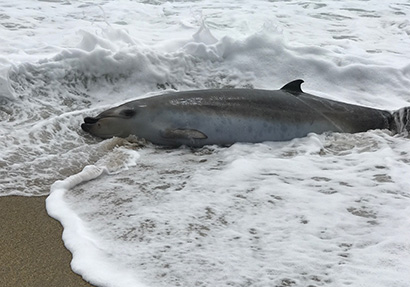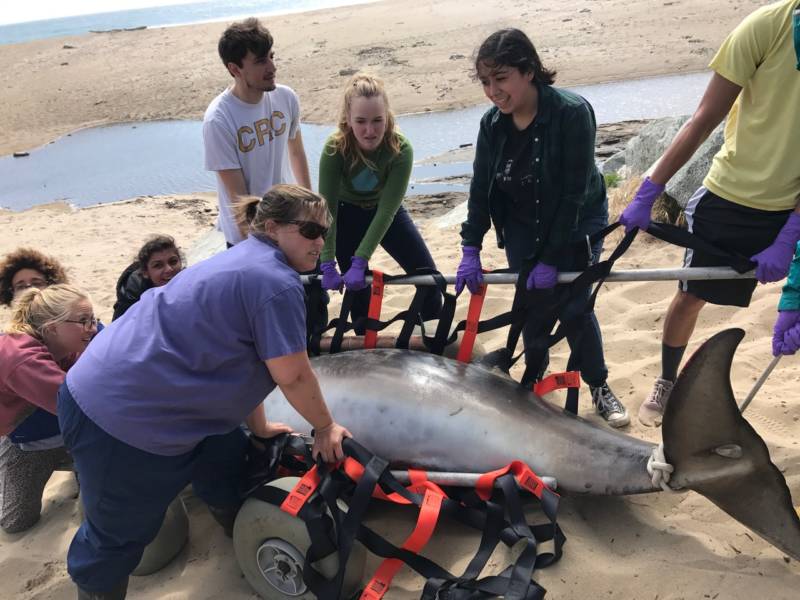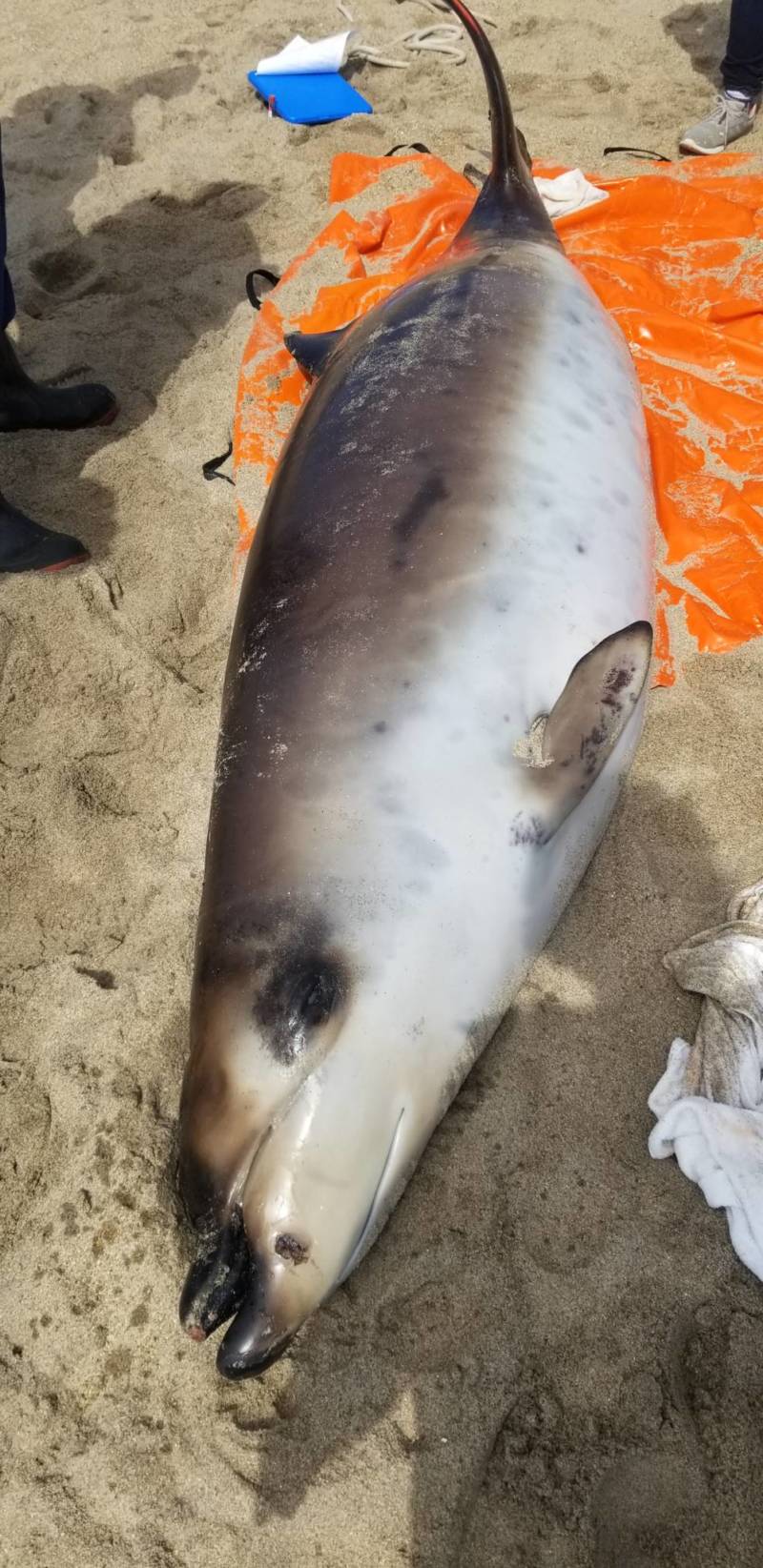On the afternoon of May 31, UC Santa Cruz physiological ecologist Robin Dunkin got a call about a whale stranded out at Scott Creek Beach, near Davenport. She and a number of colleagues from the Marine Mammal Stranding Network drove straight to the beach. To their surprise, the mammal in question was a Hubbs’ beaked whale (Mesoplodon carlhubbsi), a very rare and poorly understood marine mammal species.
“We got out to the beach. The animal was rolling in the surf, but it was clearly still alive,” said Dunkin, who directs the UC Santa Cruz Long Marine Lab Marine Mammal Stranding Network. The team also included UCSC campus veterinarian David Casper.
Scientists and volunteers were able to get a rope around the animal’s fluke, and as the tide came in, they were able to pull the 8.75-foot-long, 500-pound whale onto the sand. They sat back in awe. “There was concern for the animal,” said Dunkin, but “there was also the feeling of adrenaline when you are dealing with something that is so big and rare, and you are trying to give the animal the best care possible.”

Once it was on the sand, Casper assessed the animal and took its vitals. The whale appeared to have an injured snout; its lower and upper jawbones were broken, which would prevent it from feeding. Casper called a team of experts at the Marine Mammal Center to see if it was a candidate for rehabilitation. But there was no way to care for the whale in an existing rehab center.
“This animal is a deep-water species and had a massive traumatic injury. It would have been inhumane to try and rehabilitate it,” said Dunkin. The whale had to be euthanized on the beach and was transported to Long Marine Lab in a van.
Necropsy Results
The next step was to understand why the whale had died, if possible. At the lab, Dunkin and Melissa Miller, a veterinary pathologist at the California Department of Fish and Wildlife, performed a necropsy, collecting hundreds of tissue samples to be shared with researchers around the world. The whale’s brain was sent to a neurology lab in New York to better understand how sonar’s disruptive signals harm whales.


